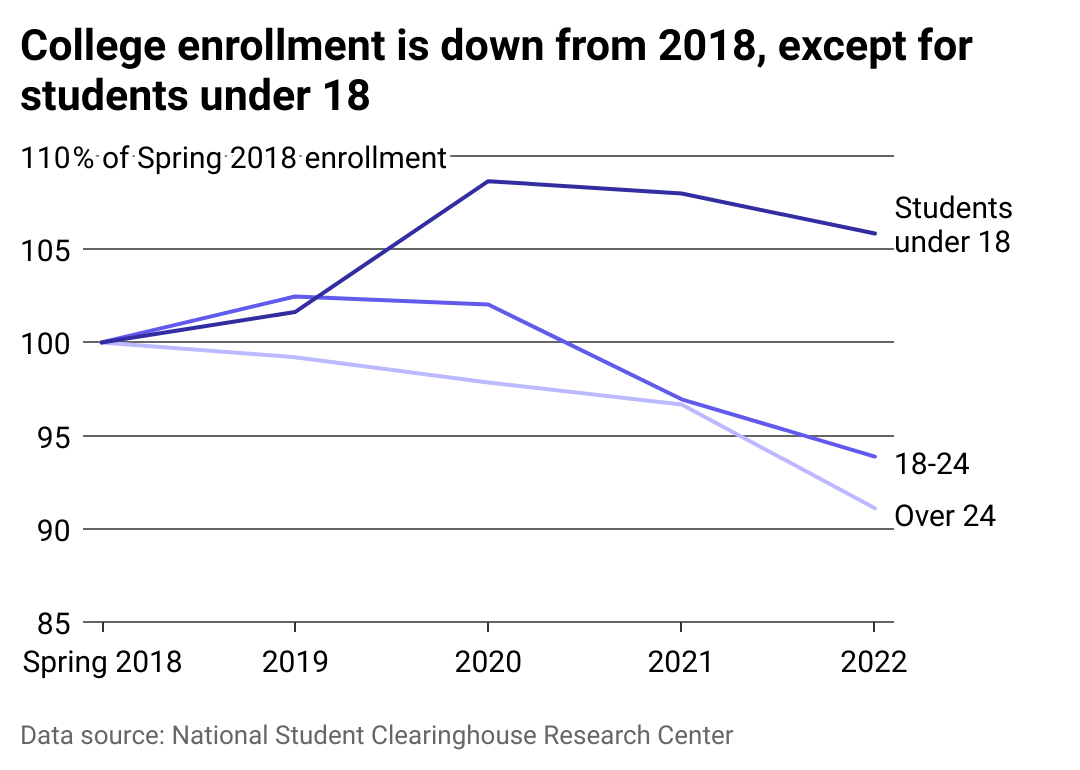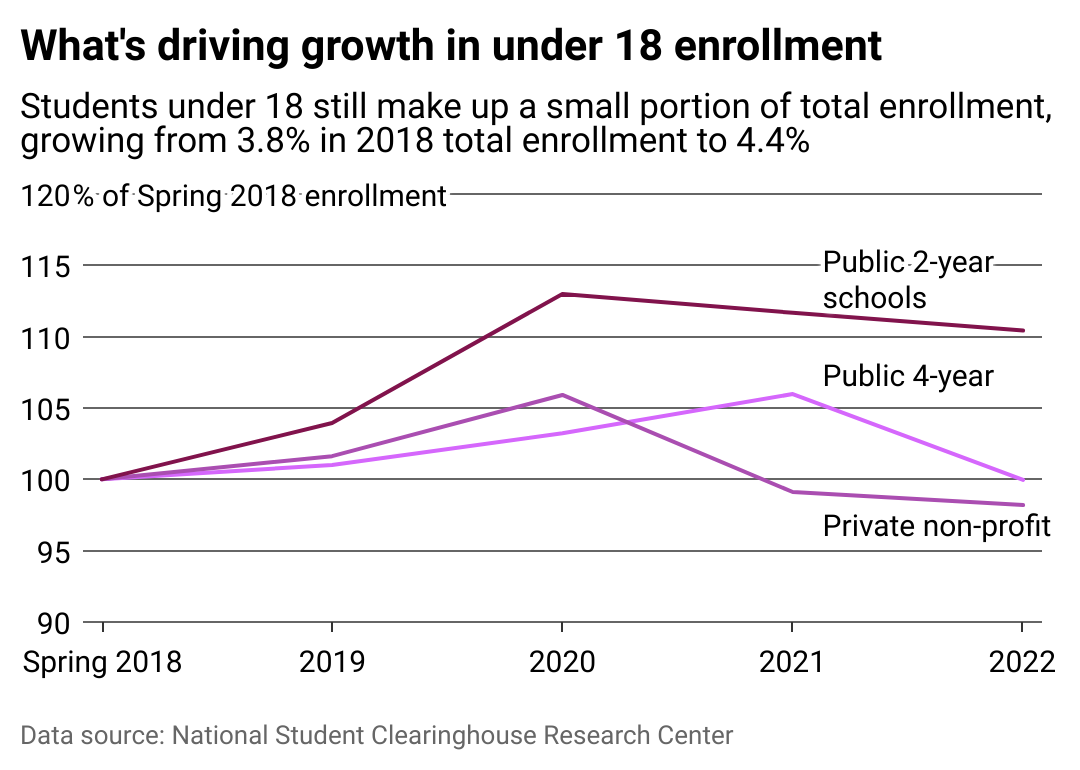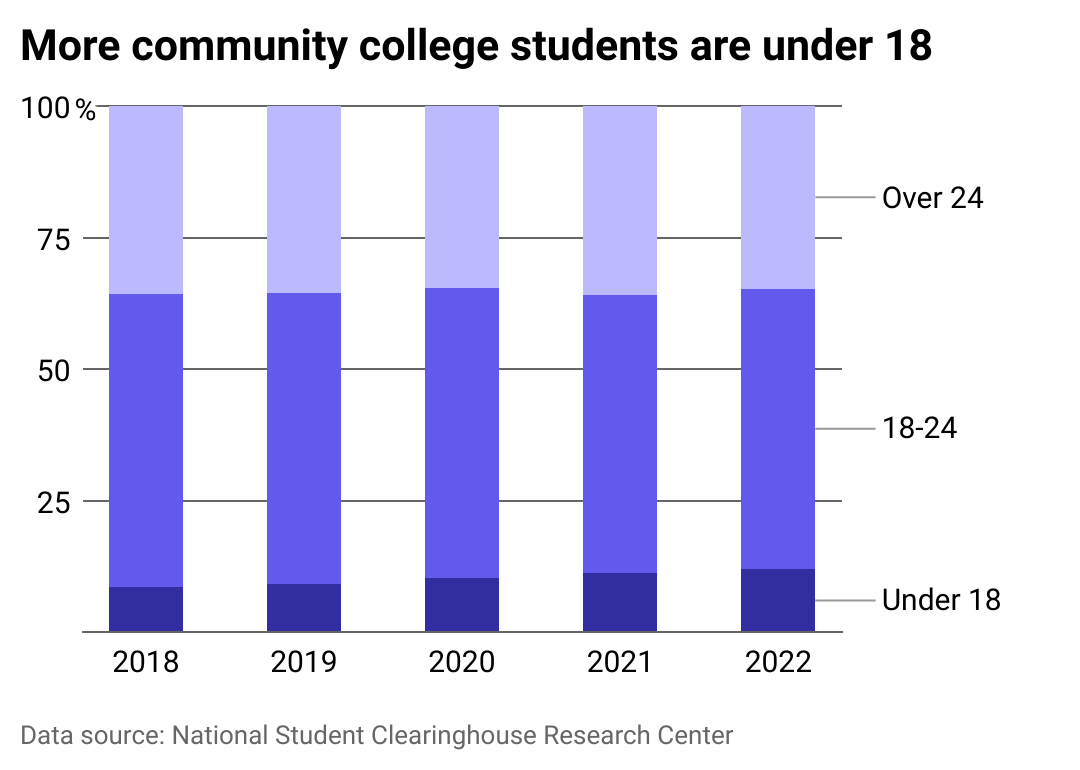How the pandemic changed enrollment for college students of nontraditional age
Canva
How the pandemic changed enrollment for college students of nontraditional age
Person holding a white diploma with bow.
The pandemic forced individuals and the world at large to reevaluate facets of everyday life that had become status quo. Higher education was no exception to this personal and systemic scrutiny.
Many traditional-age college students—those between the ages of 18 and 22—began opting for alternative pathways, such as trade programs or the freedom from student loan debt provided by joining the workforce right away. For other groups, particularly nontraditional-age students, the pandemic catalyzed important changes in the world of higher education.
Nontraditional college students are typically characterized by age—being under 18 or over 24. The most recent Census data revealed that between 2010 and 2020, the U.S. population grew at its slowest rate since the 1930s. With the U.S. facing an aging population and approaching an enrollment cliff, colleges and universities are finding new ways to cater to nontraditional students.
Community colleges are recruiting a wider array of high school students for dual enrollment, with a particular emphasis on underserved groups. Traditional four-year colleges are launching career transition and skills development programs to assist adults with workforce experience in addition to young people looking to begin their careers.
Community colleges make up the lion’s share of nontraditional student enrollment—which has been the case since at least 2015. And while enrollment since that time has nearly halved, community colleges retain nearly threefold the number of new nontraditional students each year than public four-year institutions.
In order to gauge the impact of the pandemic on students of nontraditional age, Best Universities used data from the National Student Clearinghouse Center to look at enrollment of nontraditional age students in fall 2022 compared to fall 2020, the first full pandemic academic year.
![]()

Best Universities
College enrollment by age
Line chart showing change enrollment each year relative to 2018 by age group. It is down for all groups except those under 18
Total undergraduate enrollment has decreased by roughly 1.4 million students since the onset of the pandemic, according to estimates from the National Student Clearinghouse Research Center. But enrollment had been declining for a decade before the pandemic kicked this trend into hyperdrive. Some experts attribute the decline and slow rebound partly to shifting attitudes toward the value of a college education, specifically when weighed against the time and cost of attaining one. But enrollment in trade programs has grown along with the demand for skilled trade workers. For unskilled workers, job availability and wage increases are appealing to high school graduates deciding between enrolling in college—and potentially accruing debt—or getting a job.

Best Universities
Under 18 enrollment by type of institution
Line chart showing change in college enrollment of students under 18 each year relative to 2018 by type of institution. Community college enrollment is up
When looking at total enrollment across all institution types, community colleges have witnessed the biggest decline, losing more than 800,000 students since 2020; however, as much as a decade before the pandemic, enrollment at two-year institutions was declining as more people chose to join the workforce rather than pursue degrees. According to the American Association of Community Colleges, two-year institutions are more likely to attract part-time, working students and students who qualify as nontraditional in other ways, such as by being single parents. While many adults may have deferred enrollment during the pandemic to assume other responsibilities, part-time and full-time students under 18 are bucking this trend.

Best Universities
Under 18 enrollment at two-year public schools
Stacked bar chart showing students under 18 are making up a growing share of total community college enrollment.
Students under 18 represent 12% of enrollment at two-year schools, up from 8.5% in 2018. Dual enrollment among high school students is becoming increasingly more common as institutions broaden their recruitment strategies and as more state funding goes toward subsidizing this pathway for underserved students. Many community colleges are using dual enrollment to expand equity and access to higher education instead of just advanced course offerings for only the highest academic achievers coming out of high school.
Canva
Some schools are seeking to recruit more nontraditional age students
Older woman reading
Overall enrollment of students age 24 or older across all postsecondary types has remained steady since 2018, but at private four-year nonprofit schools specifically, enrollment of this age group has increased more than any other. As colleges face the residual effects of the pandemic and broader demographic changes, such as an aging population and a shrinking number of high school graduates pursuing college education, some schools are tailoring academic programs toward working professionals. New focuses on career transitions, skill development, and even programs for those entering retirement are just a few examples of how some institutions are changing with the aging population to ensure prosperity for both.
This story originally appeared on Best Universities and was produced and
distributed in partnership with Stacker Studio.


